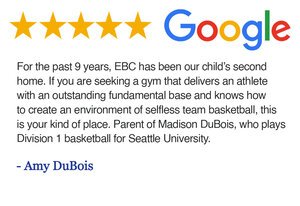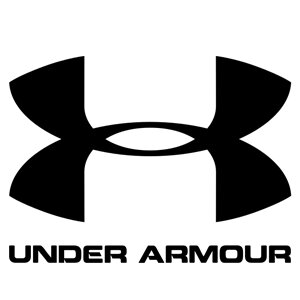EBC Basketball Philosophies
One Gym One Family
5 Pillars of Our Program
1. Love- Build a relationship with your players on and off the court that have no agenda
2. Honesty- Love and honesty go hand in hand; if you love them then you’re being honest with them. Constructive criticism along with affirmation and encouragement go hand in hand with helping athletes to develop and realize their full potential.
3. Trust- When you’re honest with your players this builds trust in your relationship.
4. Loyalty- Trust will build up to loyalty; this is where your player will run through a brick wall for you.
5. Work- Activity involving mental or physical effort done in order to achieve a purpose or result.
All these words have a two-way street to them. Once you get the love, then you can deal with the good and the bad the same way because of the commitment you have to one another.
What Is Our Vision?
As we build our program’s foundation, we do so not only for this season’s success but most importantly for the longevity of the program for years to come. Our program will be built by dedicated, genuine, and intentional coaches that are mentors and built for our student-athletes as we help to prepare them not only for success on the court but success in all facets of their lives. Our players on our 3rd-grade teams all the way up to our HS teams, will come to know and trust the pillars and philosophies of our program. This will give them the confidence and preparation to not only realize their highest individual potential but also to achieve a common goal as a TEAM.
What kind of players are EBC kids?
1. Someone who understands that a great teammate is selfless; one common goal.
2. Someone who understands every day is an opportunity to get better
3. Someone who understands you can get better in all aspects of life
4. Have the desire for the opportunity that you’ve been blessed with for improvement; body language, tone of voice, growing your brain, and becoming the best version of yourself
We’re Here:
To help our young athletes become the best version of themselves on and off the court and to use the game of basketball to teach life lessons. Coach them hard but love them harder!
“In school, you are taught a lesson and then given a test. In life, you are given a test that teaches you a lesson.” –Buzz Williams
What Is Great Team Culture?
1. Communicate our vision
2. Meet regularly with your players/parents and communicate
3. Create leaders
4. Provide feedback
5. Promote a culture of learning
Some of the words we will use in our program to help develop our team culture:
1. Leadership-This is OUR Influence as coaches
2. Culture- Created by our habits
3. Opportunity- Having an understanding that every day is an opportunity to grow as a person. 86,400 seconds in a day, what are you doing with your time? Are you focused on getting better as a person?
4. Family- Don’t tell them we are a family, SHOW IT.
“Culture is habits. Whatever program or team you’re on, understand that when you begin something you have no habits and habits take time. Time means building relationships and habits does not mean you win games. Habits are helping you build something that helps you understand how to become the best version of yourself.” –Buzz Williams
Culture Slogans
What are our Non-Negotiables?
1. Be on time- On time is 15 minutes early to practice/workouts and 30 minutes early to games
2. Eye Contact
3. Respect- We show ultimate respect for teammates (no bullying), coaches, parents, opponents, refs, and fans
4. Sportsmanship- We will win or lose with class
8 Laws of Learning- John Wooden
1. Explanation
2. Demonstration
3. Imitation
4. Repetition
5. Repetition
6. Repetition
7. Repetition
8. Repetition
EBC Terminology
Basic Offensive Terms:
· Spacing: How far away members of the offense are from one another.
· Ball Reversal: Passing the basketball from one side of the floor to the other.
· Off Ball-Movement: Screening away or making a basket cut directly after passing the ball to a teammate.
· Paint Touch: Getting the basketball into the paint by either dribble penetration or a post entry.
Types of Off-Ball Screens:
· Down screen: A type of screen that is set by an offensive player going toward the baseline to get a teammate open.
· Back screen: A type of screen that is set by an offensive player opposite of the ball and going away from the baseline leading to a direct cut (backdoor) to the basket.
· Cross screen: A type of screen that occurs when an offensive player cuts to the opposite side of the floor to set a screen for a teammate. This type of screen most commonly happens from block to block to get a post player open.
· Flare screen: A type of screen where the teammate using the screen fades out to the perimeter to get an open three-point shot.
Options for Screen Users:
· Curl: A type of movement where an offensive player moves closely around a down screen and cuts towards the basket. A curl occurs when a defender is trailing an offensive player and goes over the down screen.
· Pop: A type of movement where an offensive player breaks to the ball for a jump shot.
· Backdoor: A type of movement where an offensive player breaks away from a defender and cuts to the basket for a lay-up. A backdoor occurs when a defender is overplaying the passing lanes and can either be executed off a down screen or a backscreen.
· Flare: A type of movement where an offensive player fades behind a screen and gets to space for a three-point shot. A flare occurs when a defender stays high over the screen and can be executed from either a down screen or a backscreen.
Options for Screeners:
Pop: A screener pops when the screen user curls or backdoors.
Slip: A screener slips when the screen user pops or flares.
Motion Progressions for Screen Users:
Level 1: Spacing, Pass & Cut
Level 2: Curl, Pop, Backdoor
Level 3: Flare
Motion Progressions for Screeners:
Level 1: Spacing, Pass & Cut
Level 2: Screen & Pop, Screen & Slip
Level 3: Ghost screens
Basic Defensive Terms:
Man to Man: Our defensive strategy where a coach assigns each player to follow and defend an offensive player on the court.
Deny: When a defender is one pass away, the defender will be halfway between their man and the ball, making it difficult for their assigned offensive player to catch the ball.
Top of the i: A help side position where the defender is two passes away at the free throw line, halfway between their man and the ball.
Bottom of the i: The weakside defender who is furthest away from the ball. This defender is below the top of the I with their feet above the rim line, protecting baseline penetration.
EBC Player Development Philosophy
High Clarity = High Performance
Explaining the WHY in everything that we do. In detail coaching them in what they are looking for, where you want to go, what it looks like and what it looks like when you get there.
EBC Fab 5 skill set absolutes
1) Ball Handling
2) Footwork (Rip, Pivot & Jabs)
3) Change Pace/Change Direction (Body & Ball Movement)
4) Finishing (4 Solid Finishes: Reach Out, Inside Hand Finish, Jump Stop, Reverse)
5) Shooting (PCS Shooting)
We want to go from good to great in our Fab 5 absolutes. As a program these 5 skill sets will be replicated in practice and training.
Social Media Workout vs Development Workout
The difference between a social media workout and a development workout comes down to detail in the teaching. A social media workout only requires what is “cool” or what “looks good” and a development workout requires high-level detail and coaching.

















